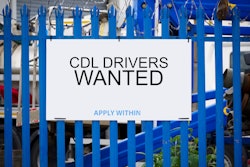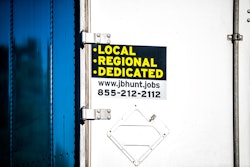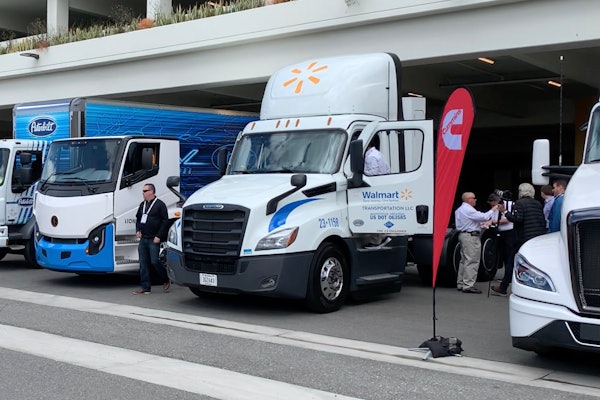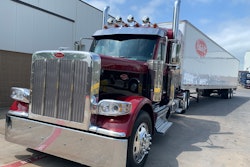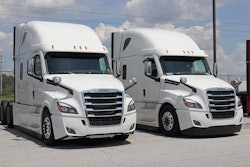Note: This is the first of a three-part series that takes a look at key findings from this year’s Best Fleets to Drive For program. Written by CarriersEdge President Mark Murrell, the columns cover noticeable trends/findings in driver compensation and benefits, HR practices and operational strategy that effect a driver’s day-to-day experience. Part 2 looks at what caught attention from the human resources scoring section of the program.
It’s been 15 years now since CarriersEdge, in partnership with Truckload Carriers Association, launched the annual Best Fleets to Drive For program with a mission to shed light on the industry’s best workplaces.
The programs seen as new and creative back then are now standard practice among fleets. Dashcams, driver scorecards and online training each were envelope-pushing ideas that are now just a regular part of a carrier’s operation. And some of the things we see emerging today will likely become normal by the time this program celebrates its 30th anniversary.
This year’s edition of the program saw 165 companies nominated by their drivers, 109 of which completed the interview process and 95 that made it through to the finals. We also collected more than 9,400 driver surveys, giving us a clear picture of what’s working and not working in these fleets.
Here’s what caught our attention from this year’s program in the areas of compensation and benefits.
Compensation
Driver compensation continues to evolve, and we’re seeing changes in a variety of places, beyond just rate-per-mile. Paying drivers based on their experience level is slowly becoming standard practice, with most fleets offering some range in starting pay that reflects the driver’s verified experience. Guaranteed pay is also continuing its growth, with most of this year’s participants providing some kind of guaranteed minimum or equivalent program to help with pay consistency.
One area of compensation that has shifted dramatically in the past few years is the average pay for orientation. Across all finalists, the average paid out to drivers this year was $213 per day, with several paying over $400 per day. Just two years ago, it was considered a big deal if a fleet paid drivers $150-200 per day for orientation.
More than 25% of fleets in the program are now offering a profit-sharing program, which is something we’ve seen continue to grow over the past few years. It’s still not a common practice, especially compared to other industries, but it is steadily gaining momentum and we expect that to continue.
Retirement accounts
When it comes to retirement, it’s been standard practice among the Best Fleets for quite some time to offer drivers a retirement savings plan with a company match. The plans and total company contributions have stayed consistent for several years. What is changing is how long drivers need to be employed with the company before they can participate.
Until recently, it was common for companies to have a six month or longer waiting period. This year we saw that shrinking to three months. Several fleets in this year’s program allow drivers to enroll immediately at the time of their hiring, which we had never seen previously. For fleets aiming to hire more experienced drivers, a shorter qualification period (especially when added to the experience-based pay noted above) makes for a more attractive package, so we expect to see that trend continue in the future as well.
PTO
The amount of paid time off a driver receives plays a significant role in their overall satisfaction with a company. Home time and PTO are especially important among the younger generation of drivers entering the industry who seek a more "normal" lifestyle – like what’s offered in other industries. The Best Fleets are beginning to recognize this, with more than half in this year’s program ramping up how quickly drivers accrue time off. Rather than having to wait until after the first year to take PTO, it’s becoming more common to see PTO available for use within the first six months with a few even offering it at three months.
Also notable is the fact that there had previously been almost no changes in PTO programs through the history of the Best Fleets program. For 14 years, company policies and time off allotments stayed consistent with no meaningful changes year over year. This year there was a massive shift in how much PTO fleets are offering, and how soon drivers can start accessing it. Few questions in the Best Fleets program have seen such a trajectory of consistency followed by a rapid across-the-board change, which is notable in itself.
This change was not seen in all fleets, however. About one-third (32%) of the finalists had an accelerated ramp-up and higher top end of PTO allotment, with the other two-thirds sticking to traditional policies. However, with such a significant minority of fleets making such significant changes to policies, the differences between innovators and stay-the-course fleets becomes more dramatic and noteworthy.
The Best Fleets to Drive For evaluation process surprises us every year. Even though we’ve conducted this annual exercise 15 times, there are always innovative ideas and new trends that emerge from the data unexpectedly.


